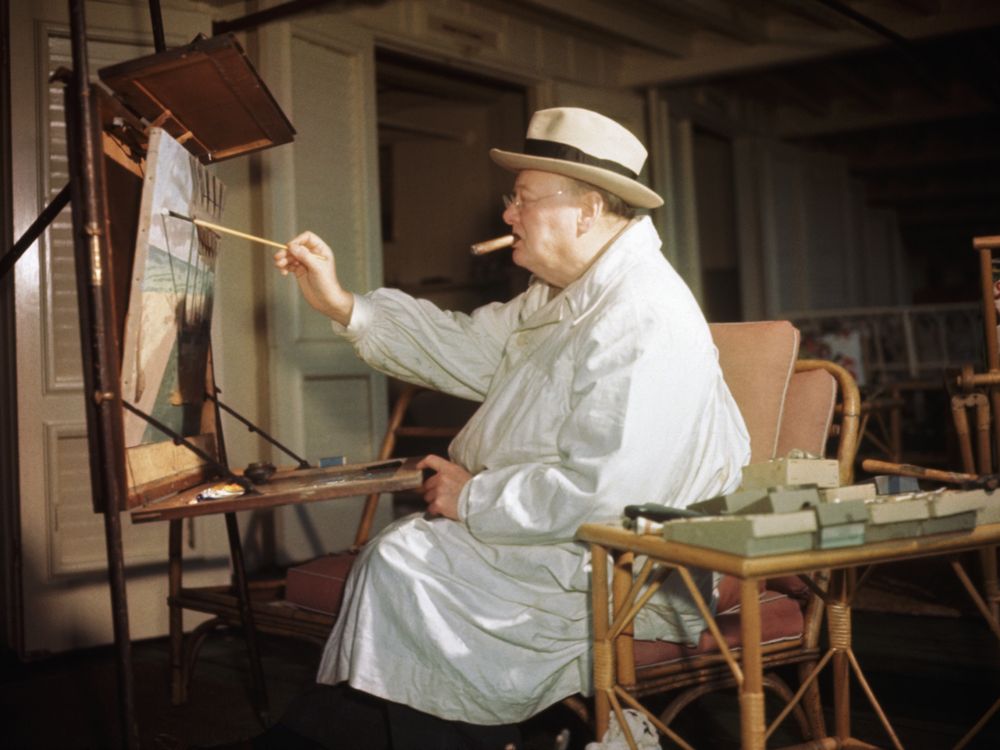Claude Monet’s painting, “Charing Cross Bridge”, has emerged from obscurity, freed from layers of accumulated grime and smoke after decades of confinement in Winston Churchill’s drawing room. Today, this remarkable piece is once again vibrant and visible in all its original brilliance, following a meticulous restoration process that stripped away decades of cigar smoke residue that clung to its surface. This restoration, now on display at London’s Courtauld Gallery, not only highlights the significance of conservation but also reveals the intertwined legacies of art, history, and personality in unexpected ways. For art enthusiasts and historians alike, the unveiling of this piece offers an opportunity to reflect on the role of artwork as a witness to the lives and habits of those who choose to live among them.
The Genesis of “Charing Cross Bridge”
Monet’s “Charing Cross Bridge” was painted as part of his iconic London series, created between 1899 and 1905, and is one of the lesser-known masterpieces from this period. Like many other Impressionist works, the painting captures a fleeting moment—the atmospheric effects of fog and light along the River Thames. In this series, Monet immortalized several iconic London landmarks, including the Houses of Parliament and Waterloo Bridge, through varied lenses of light and weather. The hazy, ethereal quality of “Charing Cross Bridge” evokes a dreamlike vision of the cityscape, a scene so fragile it appears as though it could dissolve at the slightest disturbance.
This canvas, like the others in the series, reflects Monet’s obsession with depicting atmospheric effects in a style that defied realism. Instead, his brushstrokes captured emotions, states of being, and ephemeral sensations. The muted palette of blues, purples, and greens employed in “Charing Cross Bridge” conjures a vision of a city submerged in both fog and its own industrial self-image—a nuanced nod to the transformative period of London at the turn of the century.
A Journey to Churchill’s Home
The painting’s journey from Monet’s studio to Churchill’s drawing room is a testament to the interplay between art and personal history. Churchill, himself an amateur painter, admired Monet’s bold use of color and light. During the early 20th century, Churchill’s acquisition of the painting was not merely an act of patronage but also a reflection of his desire to surround himself with visual reminders of the cities and landscapes that shaped his worldview. Displayed in Chartwell, Churchill’s home in Kent, “Charing Cross Bridge” became part of an eclectic collection that included works by other masters, interspersed with Churchill’s own paintings.
But for all its splendor, “Charing Cross Bridge” endured a fate that Monet likely never imagined. Hanging in a room where Churchill frequently held gatherings, wrote speeches, and reflected in solitude, the painting became a silent participant in the daily rituals of the British Prime Minister. The blue and purple mist depicted by Monet became increasingly clouded, dulled by decades of exposure to cigar smoke. The residue from Churchill’s tobacco habit settled into the fabric of the canvas, blurring the already delicate forms and dimming the vibrancy of Monet’s painstakingly layered pigments.
Impression
The grime accumulated on “Charing Cross Bridge” tells a story that transcends visual aesthetics. Churchill’s cigar smoke represents an imprint of his personality, his habits, and even the political climate of his era. Cigars, for Churchill, were more than mere indulgence—they were a symbol of power, contemplation, and his refusal to be intimidated during times of uncertainty. This context, embedded within the layers of smoke on the painting, turns the residue into a material manifestation of time’s passage, of a history laden with both artistic and personal significance.
For the conservators at the Courtauld Gallery, the challenge was to strip away the unintended additions to Monet’s work while preserving the authenticity of his brushstrokes. Removing the layers of smoke and grime was not simply a technical endeavor but an interpretive one as well. How does one decide where Monet ends and Churchill’s influence begins? At what point does cleaning a painting risk erasing the history it has quietly documented?
The Restoration Process: Unveiling a Lost Brilliance
The process of restoring “Charing Cross Bridge” was carried out using advanced scientific methods that allowed conservators to selectively remove surface contaminants without disturbing Monet’s original layers. Under magnification, conservators carefully tested solvents to dissolve the tar-like residue without affecting the sensitive pigments beneath. Months of delicate work revealed a painting vastly different from the one that had been hanging in Churchill’s home.
The restoration has allowed viewers to see “Charing Cross Bridge” with fresh eyes. The hues, once muted and obscured, now shimmer with a renewed clarity, bringing to life Monet’s original vision. The mist that once engulfed the scene has lifted, revealing a more luminous and vibrant depiction of London. The contrasts between the stone arches of the bridge and the swirling waters of the Thames are more defined, and the play of light through the fog is more dynamic.
An Interplay of Histories
The newly restored “Charing Cross Bridge” provides a compelling narrative that connects two of the 20th century’s most prominent figures—Monet and Churchill—across time and space. The painting, like Churchill himself, has undergone transformation and renewal, emerging from the obscurity of smoke and neglect into the spotlight once again.
But the painting’s story is more than just a tale of restoration. It is a reminder of the impact of context on art. The location where a painting is displayed, the people who interact with it, and even the seemingly mundane habits of those people can alter a work’s appearance and meaning. For decades, “Charing Cross Bridge” absorbed the atmosphere of Churchill’s home, bearing witness to the Prime Minister’s contemplative hours, his triumphs, and his defeats. The smoke that clouded its surface was emblematic of the tension and complexity that defined Churchill’s life and leadership.
In a sense, the grime that once coated the painting was a layer of history, an unintended collaboration between Monet and Churchill, one that marked the passage of time and the inextricable link between art and the personal lives it touches. With the residue now removed, the painting offers a glimpse into the past—a view not only of London in the early 20th century but also of Churchill’s life as it played out in that smoke-filled drawing room.
New Life at the Courtauld Gallery
The Courtauld Gallery’s decision to display the freshly restored “Charing Cross Bridge” invites reflection on how art’s context changes our perception of it. Removed from the private intimacy of Churchill’s drawing room and placed in a public space dedicated to artistic appreciation, the painting now serves as a bridge between private and public histories. Viewers can appreciate it not only as a masterpiece of Impressionism but also as a piece imbued with the spirit of its former custodian.
Standing before the painting, one might wonder: Does the removal of the cigar smoke bring us closer to Monet’s intentions, or does it distance us from the layers of history that have accumulated on the canvas over the past century? Has the restoration process stripped away part of the painting’s narrative, or has it simply allowed a clearer view of Monet’s London to emerge?
Reflections on Restoration and Legacy
The restoration of “Charing Cross Bridge” is an act that raises questions about art, history, and the role of conservation. Is it possible to restore a work without erasing parts of its story? In the case of Monet’s painting, the process has revealed a brilliance long obscured, yet it has also removed a tangible trace of its time in Churchill’s home. This dichotomy reflects a broader tension in the world of art restoration, where the act of conserving often involves deciding what aspects of a work’s history to preserve and what to eliminate.
Ultimately, the newly restored “Charing Cross Bridge” is not just a celebration of Monet’s artistic genius but a testament to the complexities of ownership, influence, and preservation. It reminds us that art is never static—it is a living, breathing entity that evolves with time, shaped by those who encounter it and the environments in which it resides.
As the painting now hangs in the Courtauld Gallery, free of the smoke that once enveloped it, it invites us to consider how art connects disparate lives and histories. For now, it stands as a vivid reminder of Monet’s mastery and Churchill’s legacy—a masterpiece restored, a history unveiled, and a bridge between art and life made visible once more.
No comments yet.








